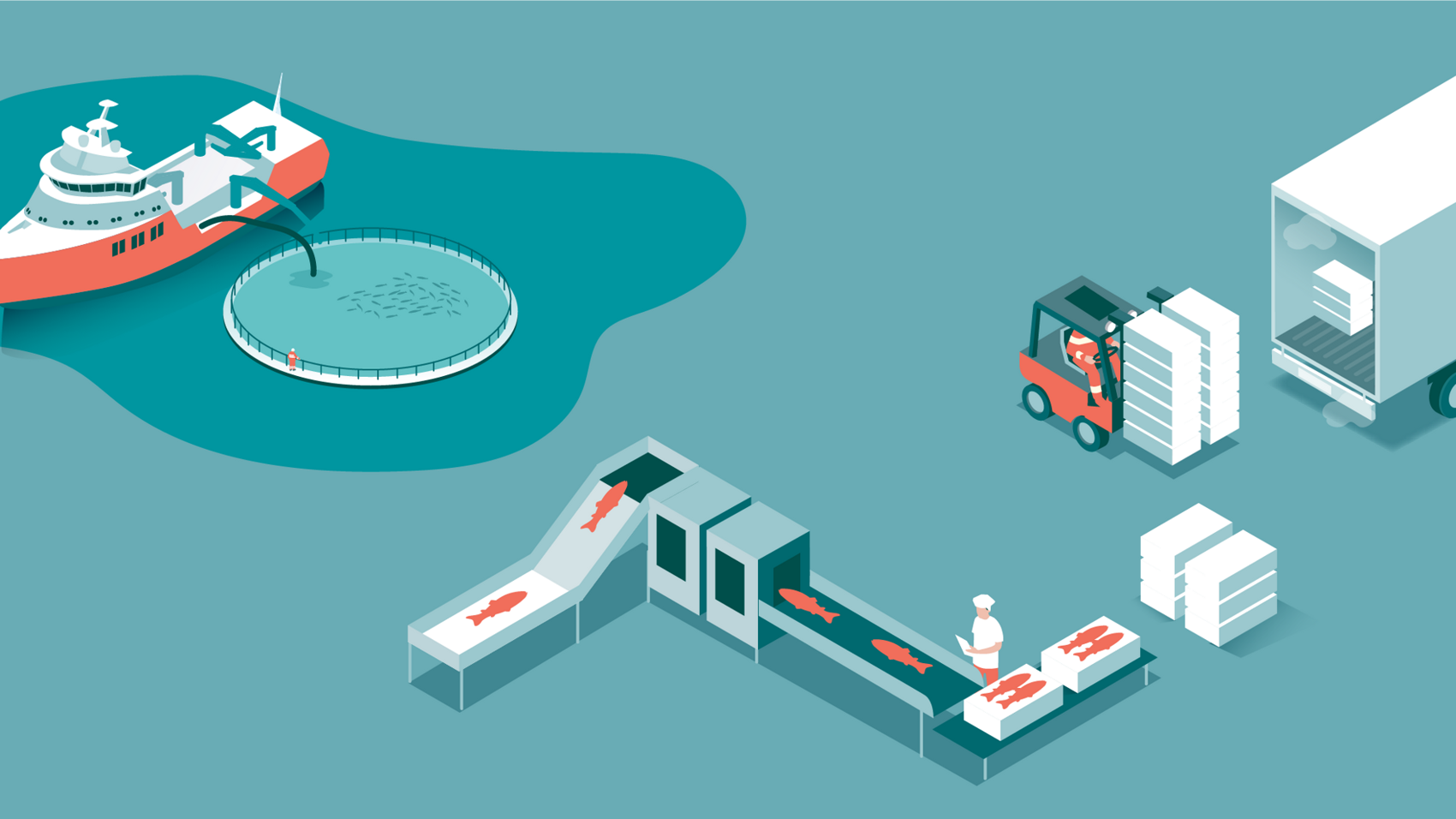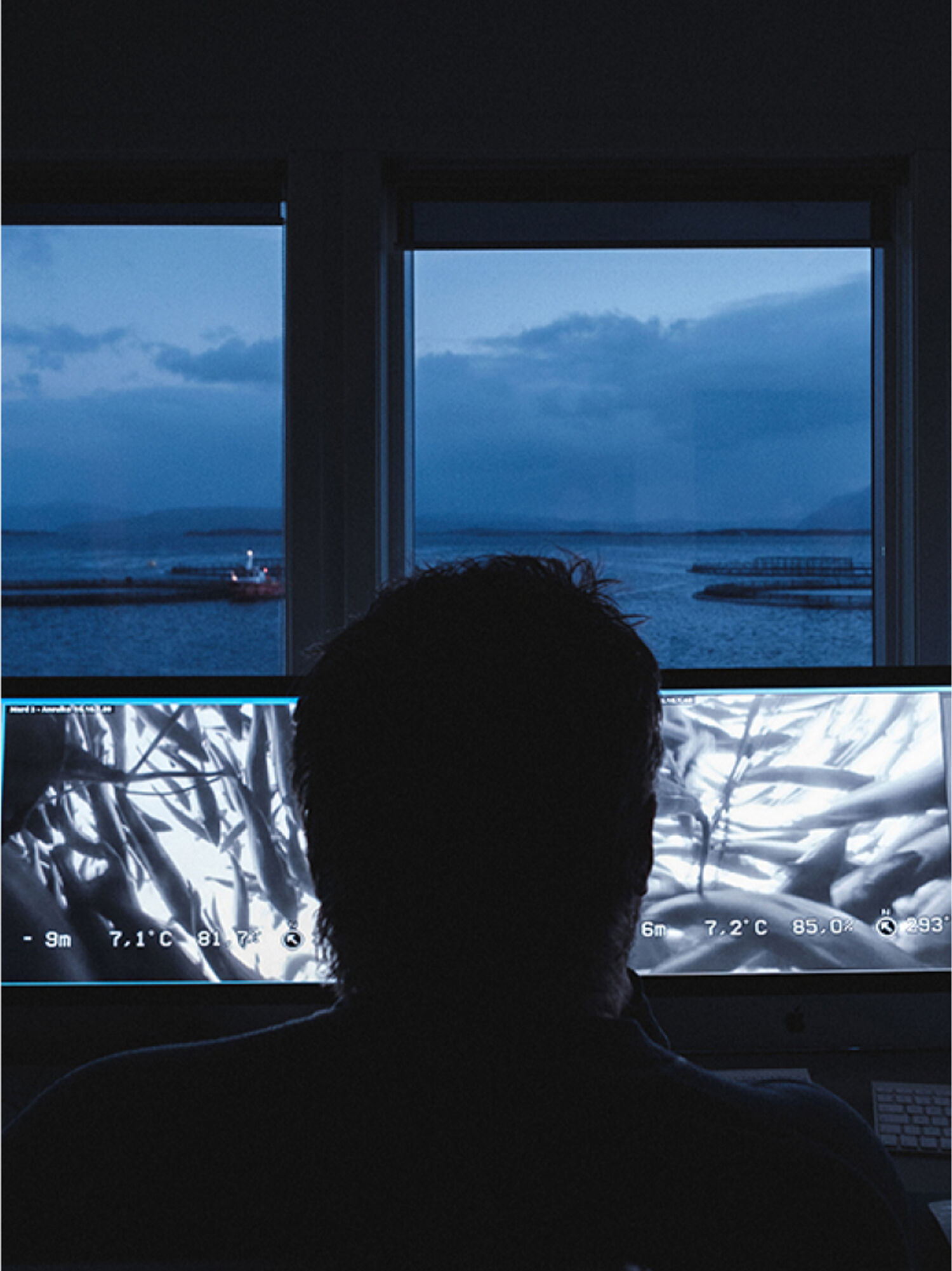Sea the solution / The Food Challenge
The quality of farmed salmon depends on the life the fish lead. Fish welfare is top priority at every stage of the lifecycle, says Cermaq´s specialist.
“A healthy salmon is one that shows normal behavior for its current life stage. It is also eating well and not showing any signs of stress or disease,” explains Olai Einen, Head of Feed and Fish Health at Cermaq Global.
As a scientist and former professor of aquaculture, Einen works closely with Cermaq´s fish. He describes a fish of high quality as a happy fish, and vice versa.
“In all our farming regions, Cermaq is among the companies with the highest survival rates in sea-water farming, and we work hard to improve every day. We believe that our strong focus on preventive fish health, supported by Cermaq expertise and external R&D, is key to achieving good fish welfare,” he says.
Survival rates for salmon at Cermaq in 2021:
- Norway: 95.1%
- Canada: 90.4%
- Chile: 96.3%
All are rolling 12 month mortality rates for calendar year 2021 (January-December 2021)
Fish welfare policy
Back in 2019, Cermaq created a fish welfare policy and a protocol for scoring the condition of fish in the company´s care.
““Cermaq’s welfare scoring is based on knowledge from the FishWell project, which was reviewed scientifically and recommended welfare indicators for salmon and trout farming.”
–Olai Einen, Head of Feed and Fish Health at Cermaq Global
"Relevant parameters are chosen for different life stages, and the scoring is based on environmental parameters, the data derived from fish groups in a given cage, and the scoring of individual fish,” Einen says.Welfare scoring has been especially important for measuring the effect of interventions such as lice treatment. Cermaq is currently researching the possibility of digitalising this process using camera systems and other non-invasive sensors in the net pens.
The lifecycle
Einen explains the lifecycle of farmed salmon in four stages, ranging from the freshwater to the smoltification, seawater and quality-grading phase when the fish are harvested.
1. The freshwater phase

The lifecycle of the salmon starts in freshwater.
“Unlike with wild salmon, where the fish mate in a river, the freshwater process takes place in tanks where the eggs are put in trays for hatching. The larvae are then provided with starter feed to grow and develop,” Einen explains.
Broodstock production for supplying eggs is done both by specialist companies and at Cermaq with the aim of selecting the best families and individuals for breeding.
“We focus on good growth, health and product quality,” Einen says.
2 . The smoltification process

The salmon adapts its physiology and behaviour to suit a life in seawater. When this transformation is complete, the salmon is known as a smolt.
This is an important period in a salmon’s life, mainly because unsuccessful smoltification might affect the salmon’s health adversely.
“Proper smoltification is a prerequisite for successful seawater farming to ensure good growth, fish welfare and survival rates. If the smoltification process partly fails, it can result in fish with low saltwater tolerance, low appetite and, in the worst case, a high mortality rate during the first months in seawater. In Cermaq we work according to best practice protocols to give fish the best chance of achieving successful smoltification,” Einen says.
“Proper smoltification is a prerequisite for successful seawater farming to ensure good growth, fish welfare and survival rates”
–Olai Einen, Head of Feed and fish health at Cermaq Global
Light management is another important aspect of the process.
“We simulate the amount of daylight linked to different seasons indoors, which prepares the fish for experiencing seasonal changes. When the salmon get the signal that it’s summer, they start to develop for a life in seawater and the skin turns shiny,” Einen says.
Another measure to aid this process is to add salt to the fish feed and the water, but this is usually not necessary.
3. The seawater phase

After successful smoltification, the salmon live in net pens at sea until they harvested at market size, which is typically between four and seven kg.“During the seawater phase, the salmon are fed different diets depending on their size. Cameras are placed in the net pens to make sure that the fish are getting the proper amount of feed without incurring waste,” Einen says.At Cermaq, all salmon are vaccinated against several important diseases. The risk of infections is kept to a minimum through extensive screening and surveillance of pathogens. There is also strict biosecurity in all facilities.“To minimise stress, we provide the salmon with good environmental conditions and avoid them unless completely necessary. An example of this is when we transport the salmon from freshwater to seawater, which is a necessary part of the cycle.
4 . Quality grading at harvest

When it’s time to harvest the fish, they are passing through a hose into a wellboat and transported to a processing plant by sea. If the fish were to experience high levels of stress during this phase, the meat texture could be affected.
“It´s always important to have good and gentle routines for this last phase,” Einen says.
Before the salmon are ready to be packed and sent to customers, quality grading takes place.
“Although general quality is good, there will always be minor differences in body shape or appearance of the fish, or in color and fat in the fillet. This is usually just normal biological variation,” Einen says.
“Although general quality is good, there will always be minor differences in body shape or appearance of the fish, or in color and fat in the fillet. This is usually just normal biological variation”
–Olai Einen, Head of Feed and fish health at Cermaq Global
To ensure the quality of the salmon before it reaches the consumer, Einen emphasises the importance of cold storage during transport.
What to read next

Meet Joey – revolutionising fish health with iFarm
Facial recognition is no longer reserved for the smartphone market. With iFarm technology every salmon is treated as an individual.